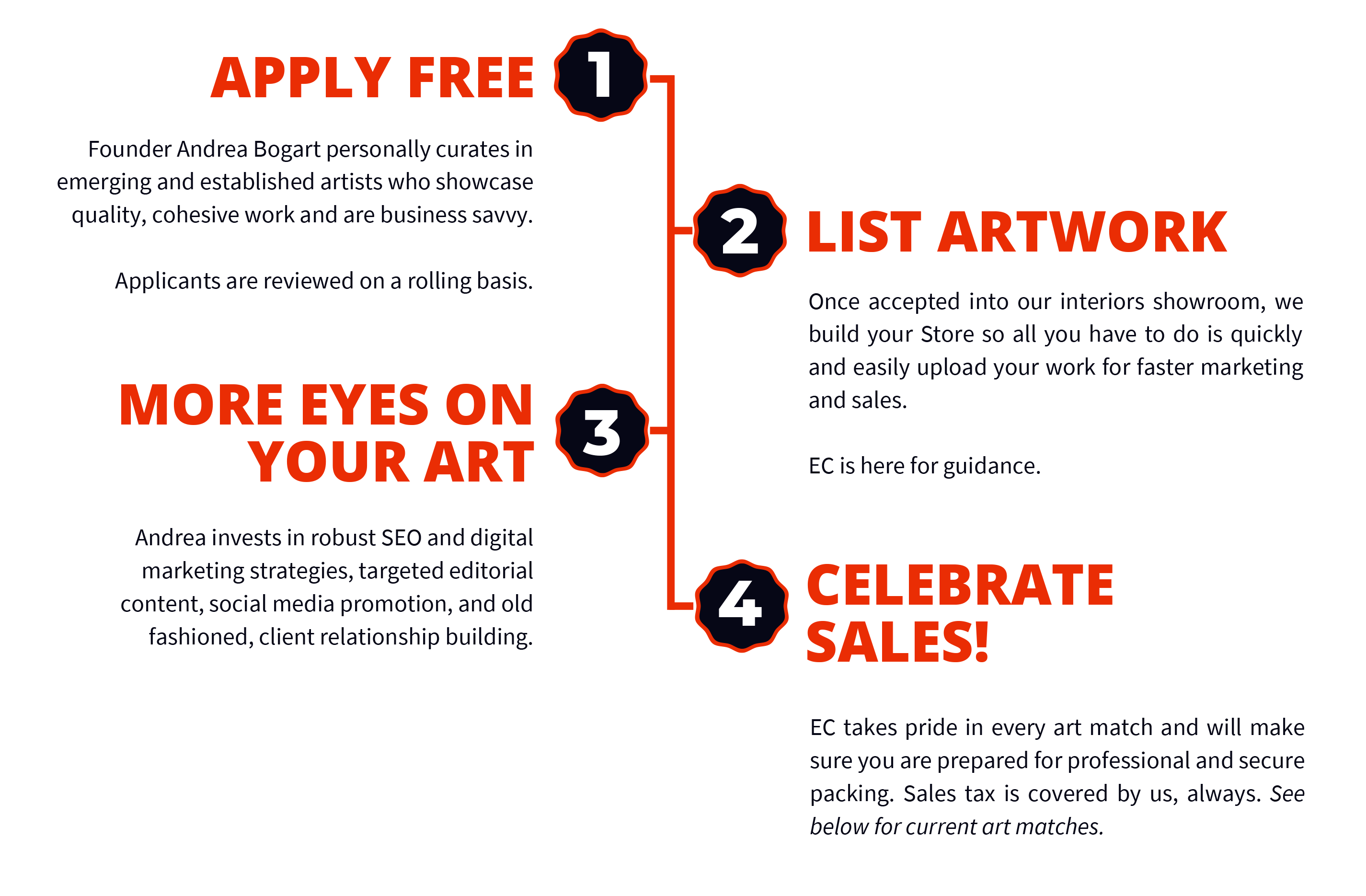W hen selling yourself to commercial art buyers, building their confidence in you as a professional is extremely important. Some in the trade want emerging or mid-career artists, so don’t be concerned that your CV is light.
And for those of you saying, “CV? Huh?” A CV (Curriculum Vitae) is like a resumé as it includes an overview of your professional history and achievements.
And although it looks similar to a resume, it contains elements which are only related to your artistic professional practice.
Here is how to compose one in 10 steps:
STEP 1 I Personal Details
Keep it simple. CV is referenced as a biography not a resume.
- Include contact information if you are sending out your CV to galleries in the hopes that they will reply:
- Only include your website if it directly relates to your artistic practice.
STEP 2 I Education
This section of a CV relates to institutional education specifically in your field. If you do have post-secondary education in the arts field, include the school(s), the year(s) that you graduated, and the degree(s). If you do not have a degree in the visual arts field, leaving this section off of your CV is perfectly acceptable.
University of British Columbia, Master of Fine Arts, 2009
Emily Carr University, Bachelor of Fine Arts, 2005
STEP 3 I Exhibitions
Beginning with your most recent, you should list your exhibitions in a manner similar to this:
2011 Title of Show, Museum of Modern Art, NY
2010 I’ve been showing a lot lately, Galerie Espace, Montréal
If you have a large number of exhibitions split them into two or more categories: solo exhibitions, group exhibitions. You can weed out the exhibitions that are no longer relevant to your career. If you don’t have a lot of exhibitions, you are assuring the reader that they are not looking at a short list, but rather your most relevant history.
STEP 4 I Bibliography
In this section of your CV, you can include any articles in which you or your art appeared. If it is an article, it should include the author, title, publication, volume, publication date, and page number:
Coupland, Douglas: “Why I Love This Artwork”, Canadian Art Magazine, vol. 12, February 2011, p. 55-60
If your work appeared on the cover of a publication, you can format your information like this:
Canadian Art Magazine, Cover, vol. 12, February 2011
If writing about your artwork or your artwork itself appears in a book, the formatting should read:
Schwabsky, Barry (Compiler), Vitamin P: New Perspectives in Painting, Phiadon Press 2004, p. 78
STEP 5 I Collections
This portion lists public institutions which own your artwork. This could be museums, corporate collections, or even municipalities or agencies. They can simply be listed under the heading collections:
The Vancouver Art Gallery
The Canada Council Art Bank
If several people own your artwork in private collections and you would like to note that, you can list them like this:
Private collection, Calgary AB
Private collection, Vancouver, BC
Best to write this:
Works held in private collections in Canada, the United States, Germany, and New Zealand.
STEP 6 I Texts
If you have any published writing relating to either your own practice or that of others, you can list it here in proper MLA format:
“This Artwork is Awesome”, Awesome exhibition catalogue, Vancouver Art Gallery, 2006.
STEP 7 I Teaching
List any teaching positions you may have had, either as a faculty member or as a guest lecturer or speaker. You should only include those related specifically to your practice or to visual arts.
STEP 8 I Curatorial projects
You can list them simply as the exhibition itself, or add on a brief explanation:
2011, “Drawings”, Richmond Art Gallery
2010, “Paintings”, Or Gallery, co-curated by Damian Hirst
STEP 9 I Awards and grants
The list should all be specifically related to your artistic practice, unless it is extremely notable, such as the Nobel Peace Prize:
2011, Canada Council grant
2010, BC Arts Council grant
STEP 10 I Residencies
Artist’s residencies you may have attended are good to include on your CV as they show a dedication to your practice and to your professional development:
2010, Studio residency, School of Visual Arts, New York


0 Comments